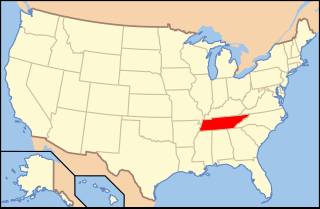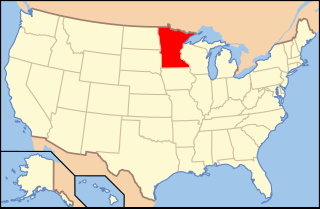Related Research Articles
The PaleozoicEra is the earliest of three geologic eras of the Phanerozoic Eon. The name Paleozoic was coined by the British geologist Adam Sedgwick in 1838 by combining the Greek words palaiós and zōḗ, "life", meaning "ancient life").

The Silurian is a geologic period and system spanning 24.6 million years from the end of the Ordovician Period, at 443.8 million years ago (Mya), to the beginning of the Devonian Period, 419.2 Mya. The Silurian is the shortest period of the Paleozoic Era. As with other geologic periods, the rock beds that define the period's start and end are well identified, but the exact dates are uncertain by a few million years. The base of the Silurian is set at a series of major Ordovician–Silurian extinction events when up to 60% of marine genera were wiped out.

Dorothy Hill, was an Australian geologist and palaeontologist, the first female professor at an Australian university, and the first female president of the Australian Academy of Science.

Curt Teichert was a German-American palaeontologist and geologist, noted for his contributions to geology, paleozoic stratigraphy and paleontology, Cephalopoda, ancient and modern reefs, and correlation, the matching of strata of the same age in different locations.
Jean Milton Berdan was an American geologist.

Paleontology in Indiana refers to paleontological research occurring within or conducted by people from the U.S. state of Indiana. Indiana's fossil record stretches all the way back to the Precambrian, when the state was inhabited by microbes. More complex organisms came to inhabit the state during the early Paleozoic era. At that time the state was covered by a warm shallow sea that would come to be inhabited by creatures like brachiopods, bryozoans, cephalopods, crinoids, and trilobites. During the Silurian period the state was home to significant reef systems. Indiana became a more terrestrial environment during the Carboniferous, as an expansive river system formed richly vegetated deltas where amphibians lived. There is a gap in the local rock record from the Permian through the Mesozoic. Likewise, little is known about the early to middle Cenozoic era. During the Ice Age however, the state was subject to glacial activity, and home to creatures like short-faced bears, camels, mammoths, and mastodons. After humans came to inhabit the state, Native Americans interpreted the fossil proboscidean remains preserved near Devil's Lake as the bones of water monsters. After the advent of formal scientific investigation one paleontological survey determined that the state was home to nearly 150 different kinds of prehistoric plants.

Paleontology in Illinois refers to paleontological research occurring within or conducted by people from the U.S. state of Illinois. Scientists have found that Illinois was covered by a sea during the Paleozoic Era. Over time this sea was inhabited by animals including brachiopods, clams, corals, crinoids, sea snails, sponges, and trilobites.

Paleontology in Tennessee refers to paleontological research occurring within or conducted by people from the U.S. state of Tennessee. During the early part of the Paleozoic era, Tennessee was covered by a warm, shallow sea. This sea was home to brachiopods, bryozoans, cephalopods, corals, and trilobites. Tennessee is one of the best sources of Early Devonian fossils in North America. During the mid-to-late Carboniferous, the state became a swampy environment, home to a rich variety of plants including ferns and scale trees. A gap in the local rock record spans from the Permian through the Jurassic. During the Cretaceous, the western part of the state was submerged by seawater. The local waters were home to more fossil gastropods than are known from anywhere else in the world. Mosasaurs and sea turtles also inhabited these waters. On land the state was home to dinosaurs. Western Tennessee was still under the sea during the early part of the Cenozoic. Terrestrial portions of the state were swampy. Climate cooled until the Ice Age, when the state was home to Camelops, horses, mammoths, mastodons, and giant ground sloths. The local Yuchi people told myths of giant lizard monsters that may have been inspired by fossils either local or encountered elsewhere. In 1920, after local fossils became a subject of formal scientific study, a significant discovery of a variety of Pleistocene creatures was made near Nashville. The Cretaceous bivalve Pterotrigonia thoracica is the Tennessee state fossil.

Paleontology in Vermont comprises paleontological research occurring within or conducted by people from the U.S. state of Vermont. Fossils are generally uncommon in Vermont. Nevertheless, however, significant finds have been made in the state. Very few fossils are known in Vermont east of the Green Mountains due to the type of rock underlying that area. During the early part of the Paleozoic era, Vermont was covered by a warm, shallow sea that would end up being home to creatures like brachiopods, corals, crinoids, ostracoderms, and trilobites. There are no rocks in the state from the Carboniferous, Permian, Triassic, or Jurassic periods. The few Cretaceous rocks present contain no fossils. The Paleogene and Neogene periods are also absent from the local rock record. During the Ice Age, glaciers scoured the state. At times the state was inundated by seawater, allowing marine mammals to venture in. After the seawater drained away the state was home to mastodons. Local fossils had already attracted scientific attention by the mid-19th century when mastodon remains were found in Rutland County. In 1950 a major Paleozoic invertebrate find occurred. The Pleistocene Beluga whale Delphinapterus leucas is the Vermont state fossil.

Paleontology in Minnesota refers to paleontological research occurring within or conducted by people from the U.S. state of Minnesota. The geologic record of Minnesota spans from Precambrian to recent with the exceptions of major gaps including the Silurian period, the interval from the Middle to Upper Devonian to the Cretaceous, and the Cenozoic. During the Precambrian, Minnesota was covered by an ocean where local bacteria ended up forming banded iron formations and stromatolites. During the early part of the Paleozoic era southern Minnesota was covered by a shallow tropical sea that would come to be home to creatures like brachiopods, bryozoans, massive cephalopods, corals, crinoids, graptolites, and trilobites. The sea withdrew from the state during the Silurian, but returned during the Devonian. However, the rest of the Paleozoic is missing from the local rock record. The Triassic is also missing from the local rock record and Jurassic deposits, while present, lack fossils. Another sea entered the state during the Cretaceous period, this one inhabited by creatures like ammonites and sawfish. Duckbilled dinosaurs roamed the land. The Paleogene and Neogene periods of the ensuing Cenozoic era are also missing from the local rock record, but during the Ice Age evidence points to glacial activity in the state. Woolly mammoths, mastodons, and musk oxen inhabited Minnesota at the time. Local Native Americans interpreted such remains as the bones of the water monster Unktehi. They also told myths about thunder birds that may have been based on Ice Age bird fossils. By the early 19th century, the state's fossil had already attracted the attention of formally trained scientists. Early research included the Cretaceous plant discoveries made by Leo Lesquereux.

Cystoporata, also known as Cystoporida or cystoporates, are an extinct order of Paleozoic bryozoans in the class Stenolaemata. Their fossils are found from Ordovician to Triassic strata.
The Maquoketa Formation is a geologic formation in Illinois, Indiana. Iowa, Kansas, Minnesota, Missouri, and Wisconsin. It preserves mollusk, coral, brachiopod and graptolite fossils dating back to the Darriwilian to Hirnantian stages of the Ordovician period.

The Montoya Group is a group of geologic formations in westernmost Texas and southern New Mexico. It preserves fossils dating back to the late Ordovician period.
The Gun River Formation is a geologic formation in Quebec. It preserves fossils dating back to the early Silurian period.
The Becscie Formation is a geologic formation in Quebec. It preserves fossils dating back to the early Silurian period.
The Beaverfoot Formation is a stratigraphic unit of Late Ordovician to Early Silurian (Llandovery) age. It is present on the western edge of the Western Canada Sedimentary Basin in the Rocky Mountains of British Columbia and Alberta, and the Purcell Mountains of British Columbia. It consists of carbonate rocks, and was named for the Beaverfoot Range at Pedley Pass southeast of Golden, British Columbia by L.D. Burling in 1922.
Madeleine Alberta Fritz was a Canadian palaeontologist. She was a professor at the University of Toronto, where she taught vertebrate studies in the department of Geology. Fritz's writing on the fossil Bryozoa along with her research on the stratigraphy of Toronto and the surrounding areas were major contributions to the geological field.

Mary Welleck Garretson was a geology teacher and a consultant in the fields of paleontology and stratigraphy. She received a degree in 1919 from Barnard College in New York, studying zoology, stratigraphy and sedimentation.
Arthur James Boucot was an American paleontologist, biostratigrapher, and taphonomist who was an expert in Silurian and Devonian marine invertebrates, particularly brachiopods.
Francisca Wieser, also known as Frances A. Wieser, or Francesca Wieser was an American scientific illustrator, drafter, artist, and photographic assistant. She worked for the United States Geological Survey, and the United States National Museum from 1911 to 1929 with the title of "paleontologic draftsman". She was known for her drawings of fossils.
References
- 1 2 3 4 Ogilvie, Marilyn Bailey; Harvey, Joy (2000-07-27). The Biographical Dictionary of Women in Science: Pioneering Lives from Ancient Times to the Mid-20th Century. Taylor & Francis US. pp. 384–. ISBN 978-0-415-92038-4 . Retrieved 3 April 2012.
- 1 2 Geological Survey (U.S.) (1979). Geological Survey professional paper. Govt. Print. Off. p. DH3. Retrieved 3 April 2012.
- ↑ Inc., Advanced Solutions International. "Memorials". www.geosociety.org. Retrieved 2016-11-25.
{{cite web}}:|last=has generic name (help) - 1 2 Kass-Simon, Gabriele (February 1993). Women of Science: Righting the Record . Indiana University Press. pp. 57–. ISBN 978-0-253-20813-2 . Retrieved 3 April 2012.
- ↑ "SIA RU007397, Duncan, Helen M. 1910–1971, Helen M. Duncan Papers, 1937–1966". Finding Aid for Helen M. Duncan Papers, 1937–1966. Smithsonian Institution Archives. 1937–1966. Retrieved 30 March 2012.
- ↑ "Mineral of the Month: Fluorspar" (PDF). United States Geological Survey. Retrieved 30 March 2012.
- 1 2 Inc., Advanced Solutions International. "Memorials". www.geosociety.org. Retrieved 2016-11-25.
{{cite web}}:|last=has generic name (help) - ↑ Duncan, Helen M. "Ordovician and Silurian Coral Faunas of Western United States" (PDF).
- ↑ "Interim report on Mississippian Arroyo Penasco Formation of North-Central New Mexico". 1997.
- ↑ Hardin, George C. "Babb Fault System, Crittenden and Livingston Counties" (PDF). United States Geological Survey. Retrieved 30 March 2012.
- 1 2 3 4 Flower & Berdan. "Memorial to Helen M. Duncan" (PDF). rock.geosociety.org. The Geological Society of America. Archived from the original (PDF) on 2018-05-02. Retrieved 30 November 2016.
- ↑ FLOWER, ROUSSEAU H., and JEAN M. BERDAN. “Memorial to Helen M. Duncan 1910-1971.” Geosociety.org, www.geosociety.org/documents/gsa/memorials/v05/Duncan-HM.pdf.
- Flower, Rousseau H.; Berdan, Jean M. (1977). "Memorial to Helen M. Duncan (1910–1971)" (PDF). Geological Society of America Memorials. 5: 1–3. Archived from the original (PDF) on 2018-05-02.